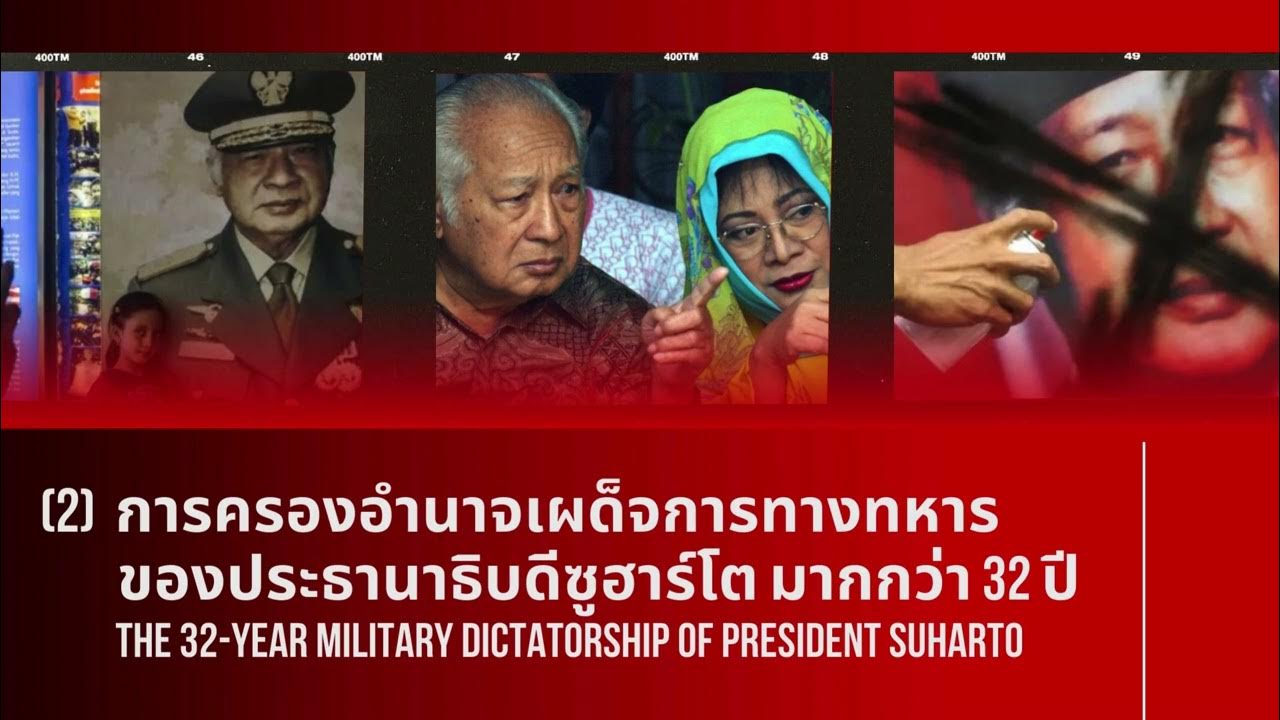peranan pemuda dalam perubahan politik dan ketatanegaraan di Indonesia kelas 12
Summary
TLDRThis video script provides an in-depth exploration of the role of youth in Indonesia's political and constitutional changes. It traces the evolution of youth movements from the colonial era, highlighting key figures and organizations such as Budi Utomo, Sarekat Islam, and the Sumpah Pemuda. It also covers the impact of youth during the Japanese occupation and post-independence, with a focus on significant movements like the Tri Tuntutan Rakyat (Tritura) and the student-led reform movements of 1998. Through historical events and the actions of influential youth leaders, the script emphasizes the crucial contributions of Indonesia's younger generations in shaping the nation's political landscape.
Takeaways
- 😀 The youth played a pivotal role in Indonesia's political and constitutional changes, beginning from the Dutch colonial era through the independence period and beyond.
- 😀 Budi Utomo, founded in 1908, was the first significant youth organization in Indonesia, focused on national development and education.
- 😀 Sarekat Islam, established in 1911, emerged as an important political organization, addressing economic issues of local traders and challenging Chinese monopolies.
- 😀 The **Sumpah Pemuda** (Youth Pledge) of 1928 united Indonesian youth in their commitment to one motherland, one nation, and one language, which was Indonesian.
- 😀 The youth were essential during the Japanese occupation (1942-1945), participating in military and semi-military groups like Heiho, Peta, and other underground movements.
- 😀 Figures like Sutomo, Samanhudi, Tan Malaka, and Muhammad Yamin were instrumental in leading youth-driven political movements and shaping the nation's future.
- 😀 The youth’s role in the **Tri-Tuntutan Rakyat (Tritura)** in 1966 was crucial, focusing on the dissolution of the Indonesian Communist Party (PKI), removal of G30S elements, and addressing economic issues.
- 😀 The Reformasi movement of 1998 saw youth activism that ultimately led to the resignation of President Soeharto, marking a significant turning point in Indonesia's political history.
- 😀 Indonesian youth contributed to the introduction of **Bahasa Indonesia** as a unifying national language during the 1928 **Kongres Pemuda II**.
- 😀 Despite colonial suppression, the rise of educational movements under figures like Tan Malaka and Muhammad Yamin led to an awakened sense of nationalism among Indonesian youth.
- 😀 The transcript underscores the importance of youth not only in political activism but also in shaping cultural and national identities in Indonesia.
Q & A
What is the main focus of the lesson discussed in the transcript?
-The main focus is on the role of youth in political and constitutional changes in Indonesia, particularly during the periods before and after independence.
What were the key youth movements during the Dutch colonial period in Indonesia?
-Key youth movements included Budi Utomo, Sarekat Islam, and several regional and religious youth organizations like Jong Java, Jong Sumatranen Bond, and Pemuda Muhammadiyah.
What was the significance of the Sumpah Pemuda (Youth Pledge)?
-The Sumpah Pemuda, declared on October 28, 1928, was crucial in unifying youth organizations from different regions and backgrounds into a single vision for a united Indonesia. It emphasized the unity of the homeland, nation, and language.
Who were some prominent youth leaders during the early 20th century in Indonesia?
-Prominent youth leaders included Sutomo, who founded Budi Utomo; Samanhudi, who established Sarekat Dagang Islam; and Muhammad Yamin, a key figure in promoting the Malay language as the national language.
What role did Tan Malaka play in Indonesia's independence movement?
-Tan Malaka was a prominent revolutionary figure who advocated for independence and was involved in communist movements. He played a key role in mobilizing youth, particularly during the early 1920s and through his connections with international communist movements.
How did the Japanese occupation impact youth organizations in Indonesia?
-During the Japanese occupation, youth organizations were either co-opted to support Japan’s war efforts or operated underground. Organizations like Kebo, Heiho, and Peta were formed, while others like the underground movements fought for Indonesia's independence.
What was the role of students and youth in Indonesia's post-independence political changes?
-Students and youth played a significant role in political movements such as the Tri Tuntutan Rakyat (Tritura), which was a response to the G30S/PKI incident in 1965. This movement demanded the dissolution of the PKI, the purification of the government, and economic reforms.
How did the reform movement in 1998 involve the youth?
-The youth, particularly university students, were central to the 1998 reform movement, demanding the resignation of President Soeharto and the implementation of democratic reforms. Their actions included large-scale demonstrations, such as the Tragedi Trisakti incident.
What were the goals of the Tri Tuntutan Rakyat (Tritura) in 1966?
-Tritura's goals were the dissolution of the PKI, the removal of G30S elements from the government, and the reduction of the cost of living through economic reforms.
What were some of the outcomes of the 1998 reform movement in Indonesia?
-The 1998 reform movement led to President Soeharto’s resignation and the transfer of power to Vice President BJ Habibie. It marked the beginning of a new era of democratic reforms and significant political change in Indonesia.
Outlines

This section is available to paid users only. Please upgrade to access this part.
Upgrade NowMindmap

This section is available to paid users only. Please upgrade to access this part.
Upgrade NowKeywords

This section is available to paid users only. Please upgrade to access this part.
Upgrade NowHighlights

This section is available to paid users only. Please upgrade to access this part.
Upgrade NowTranscripts

This section is available to paid users only. Please upgrade to access this part.
Upgrade NowBrowse More Related Video

Kuliah Kewarganegaraan - KONSTITUSI DAN NEGARA

Sejarah Indonesia Kelas 12 - Peran Pemuda dalam Perubahan Politik dan Ketatanegaraan di Indonesia

Demokrasi Terpimpin di Indonesia Tahun 1959-1965

Political System and Governance of Indonesia

Organisasi Semi-Militer Bentukan Jepang di Indonesia

Masa Orde Reformasi: Masa Pemerintahan Abdurrahman Whid dan Megawati Soekarnoputri | Part 2
5.0 / 5 (0 votes)